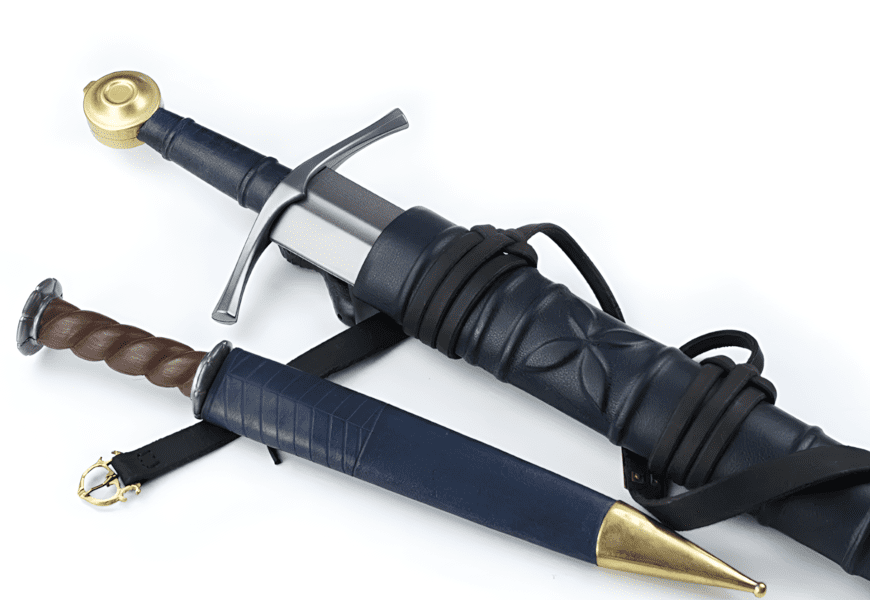What is the Difference Between a Scabbard and a Sheath?
NO AI USED This Article has been written and edited by our team with no help of the AI

Scabbards and sheaths have been used throughout history. While their primary function is to store swords, they also protect blades from rust, prevent accidental injury, and allow for easy carriage.
Today, “scabbard” and “sheath” are often used interchangeably, causing much confusion and debate.
In this article, we explore the scabbard and sheath, point out their main differences, and briefly explain their advantages and disadvantages.
What is a Scabbard?

A sword scabbard is a rigid storage case. It is often made of wood, although some are made from metal (as is the case with the scabbards of European sabers). Many are covered with materials such as leather or rayskin.
Scabbards are typically longer than sheaths. Depending on the blade, they can be straight or curved. They have a single opening through which the blade enters and exits.

“Scabbards are essential, not just for protecting the blade, but for ensuring that everything remains exactly where it should be, preventing any movement that isn’t dictated by the wearer. This precision keeps the sword secure and ready at all times, which is crucial whether you’re a soldier from a thousand years ago or today“, says Tod Cutter, the owner of Todd’s Workshop.
Scabbards are most commonly used for swords instead of daggers due to the length of their blades. They are usually carried at the waist by being hung from a belt or, in the case of the Japanese katana, placed inside a waist cloth.
What is a Sheath?

Sheaths are blade storage cases made of leather, which makes them lighter and more flexible than scabbards. Sheaths can also be curved or straight depending on the blade.
While some have a single opening similar to scabbards, others have two, one at each end. Some sheaths have straps that attach to a belt or buckle.

Some are made of a single piece of material, while most are made from two pieces stitched together.
Although sheaths are more commonly used for weapons with shorter blades, such as short swords and daggers, they are occasionally used for regular swords, especially those made for LARP (live-action roleplay) purposes.
What to Choose – Scabbard or Sheath?

Generally, both the scabbard and sheath are great options for storing and carrying bladed weapons.
Scabbards are typically recommended for swords as they offer greater protection for both the blade and wielder. Wood is superior to leather for protecting blades from rust.
Sheaths are better suited for tactical weapons, including utility knives, short swords, and daggers. Sheaths are lightweight and so allow for easier carriage. Also, a leather sheath is more pliable and easier to store than a rigid scabbard.
However, one disadvantage is that both the blade and sheath will require regular maintenance, as leather damages more easily.
For long-term storage, a scabbard is preferable to a sheath.




